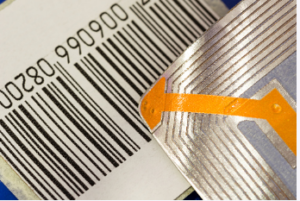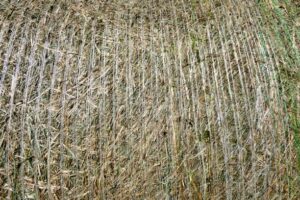If you’re organising a conference rooms Adelaide, you must find a convenient venue for your guests. It includes ensuring the platform is easy to access from the airport and other transport connections.
 It’s also essential that the venue has good audiovisual equipment. Minor inconveniences like a projector that’s not working can quickly ruin an entire meeting.
It’s also essential that the venue has good audiovisual equipment. Minor inconveniences like a projector that’s not working can quickly ruin an entire meeting.
The Location
The location of a conference venue is essential for a variety of reasons. Firstly, it needs to be easily accessible by both private vehicles and public transport. It means that delegates won’t spend much time travelling and can focus more on the event. Secondly, the venue should be near hotels or other accommodations so delegates can stay nearby. It will save them money on travel costs and allow them to socialise after the conference. For professional conference rooms Adelaide services, check this out now!
There are many different types of conference venues in Adelaide, with a wide range of sizes and facilities available. Some are very large and can hold thousands of people, while others are smaller and more intimate. Regardless of the size, most of these venues will have audiovisual equipment to help with presentations and videoconferencing. Some will include this in the hire price, while others will charge extra.
One of the best ways to find a conference venue in Adelaide is to use Tagvenue, which allows you to search for media by the size and type of space you require. Once you’ve entered this information, the system will show you a list of suitable venues that meet your criteria. Then, you can compare their rates and select the right one.
There are several fantastic conference venues in Adelaide, from the luxury 5-star city centre spaces to those located in the beautiful South Australian countryside. Some of these can even cater for team-building activities and social programmes. For professional conference rooms Adelaide services, check this out now!
In addition, several more affordable and convenient meeting rooms offer everything you need for your business events, including high-speed internet connections, teleconferencing equipment, and access to professional reception staff in prime locations in the heart of Adelaide’s key business districts. For example, Servcorp’s network of business centres offers your company a range of versatile meeting spaces in the most convenient locations in the heart of Adelaide’s thriving economic and business hubs at a fraction of the cost of leasing an entire office space.
The Space
The space available in a conference venue will be important when choosing the right one for your event. It will determine how many people can be seated comfortably and whether there is enough space for the presentations and breaks. It is also essential to consider how accessible the venue is. If your conference will attract visitors from a wide range of locations, try to find somewhere easy to reach by car or public transport. It will save your guests time and money and ensure they are not exhausted by the end of the day.
If you are planning a large conference, you may need a larger facility. These events can be very complex and require a lot of equipment. It is best to look for a venue that offers multiple rooms or spaces so that you can quickly adapt them to your needs. Some platforms have dedicated conference spaces with all necessary equipment, including projectors and screens. Other venues offer more flexible options, such as meeting rooms or suites that can be adapted to your needs.
In addition to the conference venue, you should look for a hotel that is close by. If your conference is expected to draw visitors from all over Australia and the world, booking accommodation near the airport is a good idea. It will make it easier for your guests to get to and from the event and will reduce travel times, which can lead to grumpy conference attendees.
The Pullman Adelaide is a perfect example of a luxury hotel that provides conference facilities. Its spacious suites feature large windows that fill the rooms with natural light and offer breathtaking views of Hindmarsh Square. Each suite includes a flat-screen TV, a mini bar, a private balcony, slippers and robes, and luxurious bathrooms.
The Equipment
Whether you’re working remotely or in person, important decisions are made in your conference rooms Adelaide. The space should have the right equipment to ensure meetings run smoothly. Employees must also know what is available in each room to best use their time there.
 RFID tracking eliminates the need for line-of-sight scanners and allows workers to quickly find items for replenishing stores.
RFID tracking eliminates the need for line-of-sight scanners and allows workers to quickly find items for replenishing stores. Before heading onto the
Before heading onto the  At a time when love has become synonymous with unconditional acceptance, Christian parents should teach their children the true nature of biblical love. Elizabeth Urbanowicz will assist attendees in understanding biblical perspectives on a love that differs from popular cultural narratives and equip them with tools necessary for providing their children to navigate relationships, peer pressure, and societal influences while keeping a firm Christian worldview.
At a time when love has become synonymous with unconditional acceptance, Christian parents should teach their children the true nature of biblical love. Elizabeth Urbanowicz will assist attendees in understanding biblical perspectives on a love that differs from popular cultural narratives and equip them with tools necessary for providing their children to navigate relationships, peer pressure, and societal influences while keeping a firm Christian worldview. Whether your grill is freestanding or part of an alfresco kitchen island, using a BBQ rangehood will help improve air quality in your outdoor entertaining space. Cooking fumes and odours are detrimental not only to you personally but also to those gathering at your home.
Whether your grill is freestanding or part of an alfresco kitchen island, using a BBQ rangehood will help improve air quality in your outdoor entertaining space. Cooking fumes and odours are detrimental not only to you personally but also to those gathering at your home. When purchasing twine, it is essential that you consider its manufacturer specifications, knot strength and tensile strength as measures of its suitability for your baler or application. By looking at these metrics you can gain more insight into its suitability.
When purchasing twine, it is essential that you consider its manufacturer specifications, knot strength and tensile strength as measures of its suitability for your baler or application. By looking at these metrics you can gain more insight into its suitability.